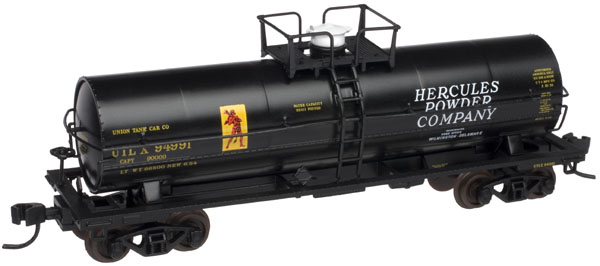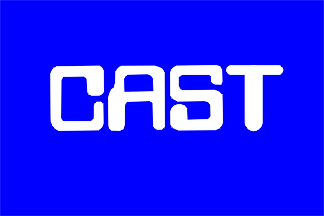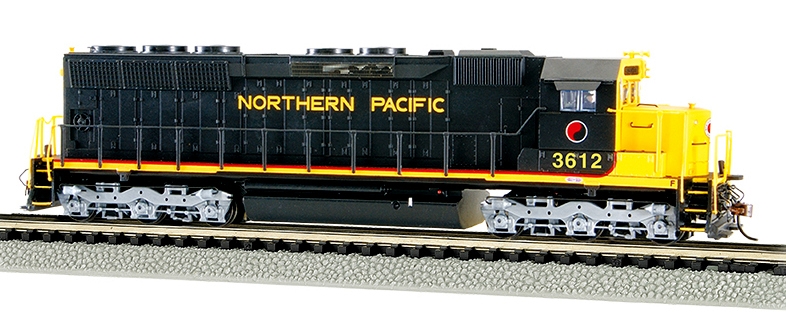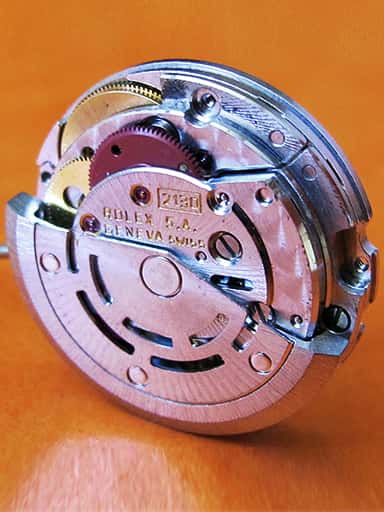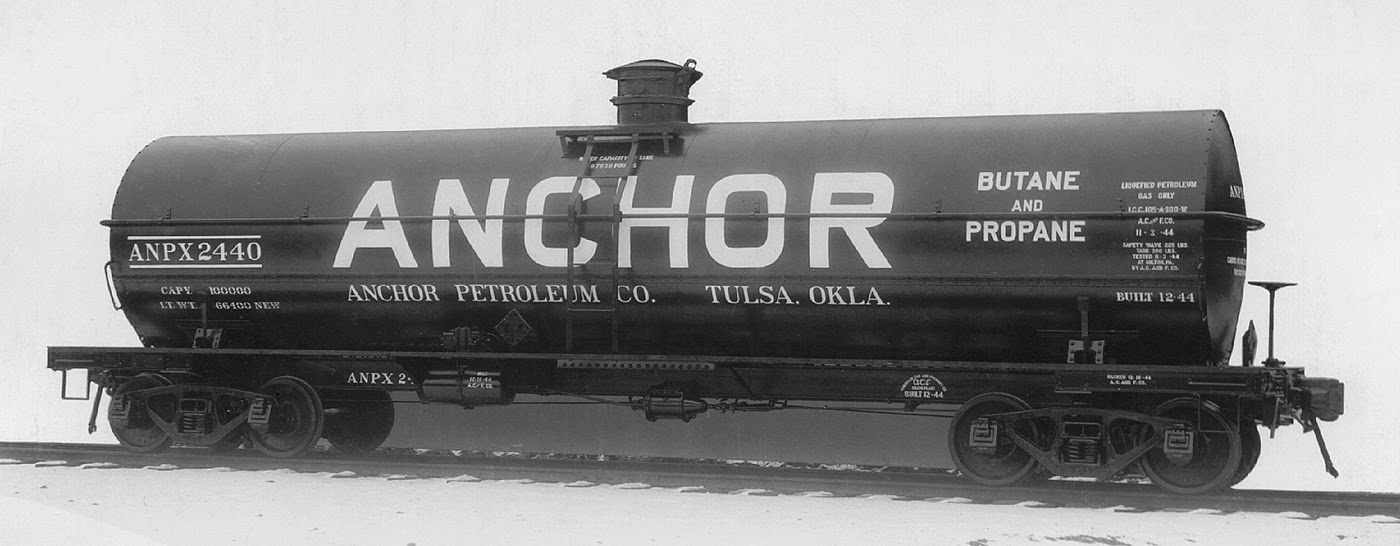Model Information: Atlas first released this model in April of 2002. It is a replica of American Car and Foundry's specialized tank car designed primarily for transporting liquefied petroleum gas. Built in the 1940's and 1950's, these tank cars became a familiar sight on many of the railroads across the country.
The first release featured eight paint schemes with examples of both versions (with and without platforms). This Atlas model reproduces this late steam/early diesel era tank car. The cars with top platform rails were used where there was no elevated loading/unloading facility. The cars without the top platform rails were often specified for customers that had access to elevated loading and unloading facilities. These models feature: Finely molded handrails; Tank fittings and safety placards; 50-ton friction-bearing trucks with AccuMate® couplers; Accurate painting and lettering; Platform where appropriate.
The first release featured eight paint schemes with examples of both versions (with and without platforms). This Atlas model reproduces this late steam/early diesel era tank car. The cars with top platform rails were used where there was no elevated loading/unloading facility. The cars without the top platform rails were often specified for customers that had access to elevated loading and unloading facilities. These models feature: Finely molded handrails; Tank fittings and safety placards; 50-ton friction-bearing trucks with AccuMate® couplers; Accurate painting and lettering; Platform where appropriate.
Prototype History: American Car and Foundry's 11,000 gallon specialized LPG tank car was designed for transporting Liquid Petroleum Gas (LPG). American Car & Foundry built the Interstate Commerce Commission (ICC) 105A-300W tank car from 1947 through the 1950s in many similar versions. It is an insulated, fusion-welded, high-pressure steel tank with top loading and unloading valves for liquified petroleum gases (LPG). Drawings appear in the Car Builder's Cyclopedias published in the late 1940s and 1950s. The design of ACF's 11,000 gallon ICC-105A tank car changed during the early part of 1951 to mid-1952 whereby the number of jacket sheets changed from 6 to 5. Generally, cars with the 89-1/4" inside diameter tank built from about March 1947 (Lots 3080 & 3083 are earliest I can document) through early 1951 (with some built as late as 1952) had 6 pieces of sheet metal welded together to form the jacket. Most of the ACF-design cars built from mid-1952 through 1954 came with 5 panels. The period from early 1952 through mid-1952 was a transition period where at least three jacket versions were produced. While there are a few exceptions to this general rule, these 6-panel and 5-panel jacket arrangements represented the vast majority of cars built from March 1947 through 1954 (after which time the tank design changed considerably).
LPG cars first began to be produced in modest numbers in the 1930s and by the late 1940s, they were being produced in relatively large numbers. describes flammable hydrocarbon gases including propane, butane and mixtures of these gases. LPG, liquefied through pressurization, comes from natural gas processing and oil refining. LPG is used as heating, cooking and auto fuel. In different countries, what is supplied can be propane, butane or propane-butane blends.
LPG cars first began to be produced in modest numbers in the 1930s and by the late 1940s, they were being produced in relatively large numbers. describes flammable hydrocarbon gases including propane, butane and mixtures of these gases. LPG, liquefied through pressurization, comes from natural gas processing and oil refining. LPG is used as heating, cooking and auto fuel. In different countries, what is supplied can be propane, butane or propane-butane blends.
Road Name History: 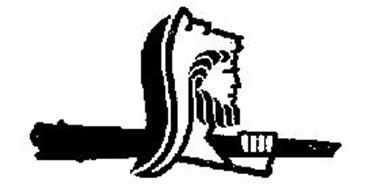 Hercules, Inc., was a chemical and munitions manufacturing company based in Wilmington, Delaware, which was formed as the Hercules Powder Company. Hercules Powder Company was formed in 1882 by DuPont and Laflin & Rand Powder Company to finance construction of a dynamite plant on land adjacent to San Francisco Bay owned by DuPont subsidiary California Powder Works.] This created the company town of Hercules, California. Hercules Inc. was a manufacturer of chemicals and munitions based in Wilmington, Delaware. The company was established in 1912 by T.W. Bacchus as the Hercules Powder Company. The Hercules Powder Company was one of the companies created from the break up of the E.I. du Pont de Nemours "powder trust" in 1911 as ruled by a U.S. Supreme Court decision. In its early years as a separate company, it continued to produce explosives and dynamite." Hercules was spun off from DuPont as a result of U.S. federal government actions in the field of antitrusts. Hercules, Inc., operated under this name until 2008, when it was merged into Ashland Inc.
Hercules, Inc., was a chemical and munitions manufacturing company based in Wilmington, Delaware, which was formed as the Hercules Powder Company. Hercules Powder Company was formed in 1882 by DuPont and Laflin & Rand Powder Company to finance construction of a dynamite plant on land adjacent to San Francisco Bay owned by DuPont subsidiary California Powder Works.] This created the company town of Hercules, California. Hercules Inc. was a manufacturer of chemicals and munitions based in Wilmington, Delaware. The company was established in 1912 by T.W. Bacchus as the Hercules Powder Company. The Hercules Powder Company was one of the companies created from the break up of the E.I. du Pont de Nemours "powder trust" in 1911 as ruled by a U.S. Supreme Court decision. In its early years as a separate company, it continued to produce explosives and dynamite." Hercules was spun off from DuPont as a result of U.S. federal government actions in the field of antitrusts. Hercules, Inc., operated under this name until 2008, when it was merged into Ashland Inc.
Hercules, Inc., was one of the major producers of smokeless powder for warfare in the United States during the 20th century. At the time of its spin-off, the DuPont Corp. retained the processes and patents for the production of "single-base" nitrocellulose gunpowders, whereas Hercules, Inc., was given the patents and processes for the production of "double-base" gunpowders that combined nitrocellulose and nitroglycerine.
From Wikipedia

Hercules, Inc., was one of the major producers of smokeless powder for warfare in the United States during the 20th century. At the time of its spin-off, the DuPont Corp. retained the processes and patents for the production of "single-base" nitrocellulose gunpowders, whereas Hercules, Inc., was given the patents and processes for the production of "double-base" gunpowders that combined nitrocellulose and nitroglycerine.
From Wikipedia
Brand/Importer Information: In 1924 Stephan Schaffan, Sr. founded the Atlas Tool Company in Newark, New Jersey. In 1933 his son, Stephan Schaffan, Jr., came to work for his father at the age of sixteen. Steve Jr. built model airplanes as a hobby and frequented a local hobby shop. Being an enterprising young man, he would often ask the owner if there was anything he could do to earn some extra spending money. Tired of listening to his requests, the hobby-store owner threw some model railroad track parts his way and said, "Here, see if you can improve on this".
In those days, railroad modelers had to assemble and build everything from scratch. Steve Jr. created a "switch kit" which sold so well, that the entire family worked on them in the basement at night, while doing business as usual in the machine shop during the day.
Subsequently, Steve Jr. engineered the stapling of rail to fiber track, along with inventing the first practical rail joiner and pre-assembled turnouts and flexible track. All of these products, and more, helped to popularize model railroading and assisted in the creation of a mass-market hobby. The budding entrepreneur quickly outgrew the limitations of a basement and small garage operation. Realizing they could actually make a living selling track and related products, Steve and his father had the first factory built in Hillside, New Jersey at 413 Florence Avenue in 1947. On September 30, 1949, the Atlas Tool Company was officially incorporated as a New Jersey company.
In 1985, Steve was honored posthumously for his inventions by the Model Railroad Industry Association and was inducted into the Model Railroad Industry Hall of Fame in Baltimore, Maryland. In addition, Steve was nominated and entered into the National Model Railroad Association Pioneers of Model Railroading in 1995.
In the early 1990s, the Atlas Tool Company changed its name to Atlas Model Railroad Company, Inc.
In those days, railroad modelers had to assemble and build everything from scratch. Steve Jr. created a "switch kit" which sold so well, that the entire family worked on them in the basement at night, while doing business as usual in the machine shop during the day.
Subsequently, Steve Jr. engineered the stapling of rail to fiber track, along with inventing the first practical rail joiner and pre-assembled turnouts and flexible track. All of these products, and more, helped to popularize model railroading and assisted in the creation of a mass-market hobby. The budding entrepreneur quickly outgrew the limitations of a basement and small garage operation. Realizing they could actually make a living selling track and related products, Steve and his father had the first factory built in Hillside, New Jersey at 413 Florence Avenue in 1947. On September 30, 1949, the Atlas Tool Company was officially incorporated as a New Jersey company.
In 1985, Steve was honored posthumously for his inventions by the Model Railroad Industry Association and was inducted into the Model Railroad Industry Hall of Fame in Baltimore, Maryland. In addition, Steve was nominated and entered into the National Model Railroad Association Pioneers of Model Railroading in 1995.
In the early 1990s, the Atlas Tool Company changed its name to Atlas Model Railroad Company, Inc.
Item created by: Emily on 2016-11-22 17:30:24
If you see errors or missing data in this entry, please feel free to log in and edit it. Anyone with a Gmail account can log in instantly.
If you see errors or missing data in this entry, please feel free to log in and edit it. Anyone with a Gmail account can log in instantly.


